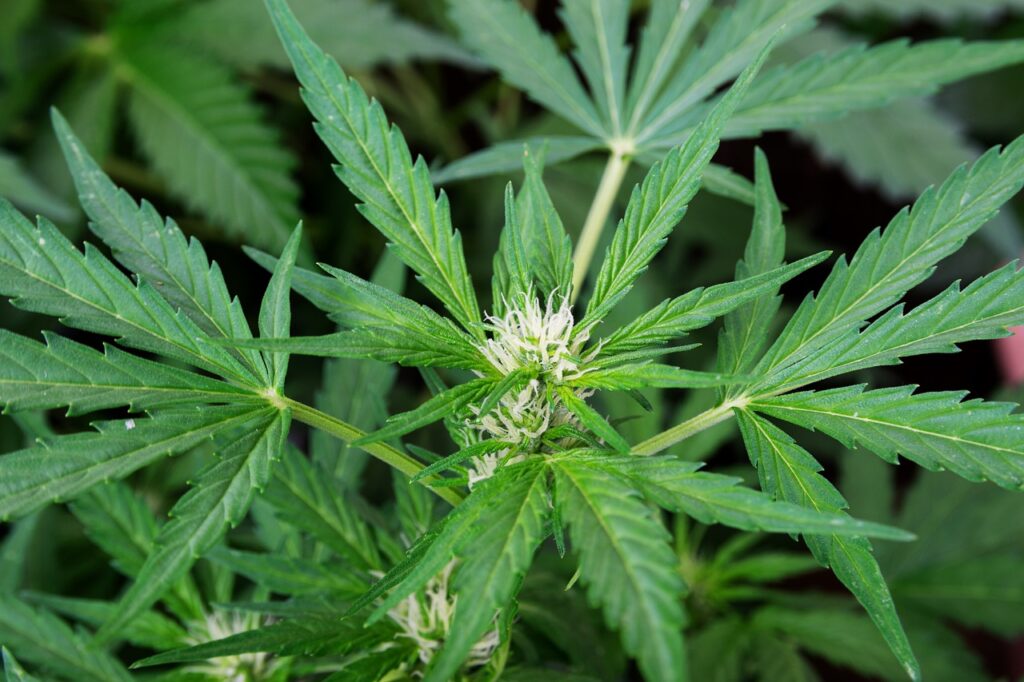The world of cannabis is rich with a variety of compounds, each offering unique properties and potential benefits. Among these, THCA, or tetrahydrocannabinolic acid, stands out as a non-psychoactive cannabinoid that has garnered attention for its potential therapeutic applications. This article delves into the characteristics, benefits, and research surrounding THCA, providing a comprehensive understanding of this intriguing compound.
Understanding THCA
THCA is a naturally occurring cannabinoid found in raw and live cannabis plants. Unlike THC, which is well-known for its psychoactive effects, THCA does not produce a high. This is because THCA flower benefits is the acidic precursor to THC. When cannabis is heated through smoking, vaping, or cooking, THCA undergoes decarboxylation, a process that converts it into THC.
Formation and Structure
THCA is formed in the trichomes of the cannabis plant. These are the small, hair-like structures that cover the plant’s surface. The biosynthesis of THCA involves the conversion of cannabigerolic acid (CBGA) into THCA through the action of the enzyme THCA synthase. This process highlights the intricate biochemical pathways that contribute to the diversity of cannabinoids in cannabis.
Potential Benefits of THCA
Research into THCA is still in its early stages, but preliminary studies and anecdotal evidence suggest several potential health benefits. These include:
- Anti-inflammatory Properties: THCA has shown promise in reducing inflammation, which could be beneficial for conditions such as arthritis and other inflammatory diseases.
- Neuroprotective Effects: Some studies suggest that THCA may help protect brain cells, potentially offering benefits for neurodegenerative diseases like Alzheimer’s and Parkinson’s.
- Antiemetic Properties: THCA may help reduce nausea and vomiting, making it a potential option for patients undergoing chemotherapy or those with chronic nausea.
- Antioxidant Effects: The compound may help combat oxidative stress, which is linked to a variety of chronic diseases.
Case Studies and Research
While comprehensive clinical trials are limited, some case studies and preclinical research provide insights into THCA’s potential. For instance, a study published in the British Journal of Pharmacology highlighted THCA’s anti-inflammatory and neuroprotective properties in animal models. Another study in the Journal of Clinical Psychopharmacology explored its potential in reducing nausea and vomiting in patients undergoing chemotherapy.
THCA in the Cannabis Market
The growing interest in non-psychoactive cannabinoids has led to an increase in THCA-rich products. These include raw cannabis juices, tinctures, and capsules. Consumers seeking the benefits of cannabis without the high often turn to these products.
Consumption Methods
To preserve THCA’s non-psychoactive properties, it is typically consumed in its raw form. Popular methods include:
- Juicing: Fresh cannabis leaves and flowers can be juiced to create a nutrient-rich beverage that retains THCA.
- Tinctures: Alcohol or oil-based tinctures can be used to extract THCA from raw cannabis, offering a convenient way to consume the compound.
- Capsules: THCA can be encapsulated for easy ingestion, providing a precise dosage without the need for preparation.
Legal Considerations
The legal status of THCA varies by region. In many places, it is not classified as a controlled substance due to its non-psychoactive nature. However, regulations can be complex, especially in areas where cannabis laws are still evolving. Consumers should be aware of local laws and regulations when purchasing or consuming THCA products.
Challenges and Future Directions
Despite its potential, THCA faces several challenges. The lack of extensive clinical research limits the understanding of its full range of effects and potential applications. Additionally, the cannabis industry must navigate regulatory hurdles to bring THCA products to market.
Future research is likely to focus on understanding the mechanisms behind THCA’s effects and exploring its potential in treating various medical conditions. As interest in non-psychoactive cannabinoids grows, THCA may play a significant role in the development of new therapeutic options.
Conclusion
THCA represents a promising area of study within the cannabis field. Its non-psychoactive nature and potential health benefits make it an attractive option for those seeking alternatives to traditional cannabis products. While research is still in its infancy, the existing evidence suggests that THCA could offer a range of therapeutic applications. As the scientific community continues to explore this compound, it may unlock new possibilities for health and wellness.


